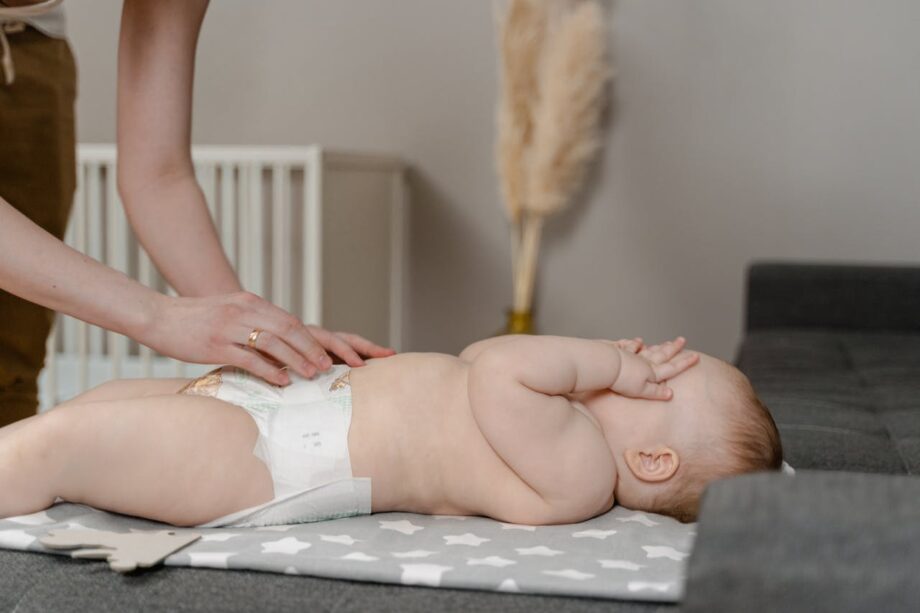Discover effective ways of Dealing with Diaper Rash with our expert tips. Keep your baby comfortable and happy.
Table of Contents
Introduction
Embark on a journey to ensure your baby’s comfort by mastering the art of dealing with diaper rash. This guide covers everything from understanding diaper usage to effective changing techniques. Prevent diaper rash by using gentle cleaning, proper cream application, and breathable clothing. Tackle teething diaper rash and consult a pediatrician for severe cases. Elevate your parenting skills with these essential insights.
Choosing the Right Diapers
Selecting the right diapers plays a pivotal role in preventing diaper rash. Opt for breathable, hypoallergenic options to minimize irritation. Ensure a proper fit to prevent leaks and friction. Consider your baby’s sensitivity to materials and choose diapers free from harsh chemicals. Regularly check and change diapers to maintain dryness. Choosing the right diaper is key for your baby’s comfort and health.
Effective Diaper-Changing Techniques
Prompt Changes:
Change diapers promptly to minimize prolonged exposure to wetness.
Thorough Cleansing:
Gently clean the diaper area with fragrance-free wipes or a damp cloth.
Air Drying:
Allow the baby’s bottom to air dry before putting on a fresh diaper.
Proper Wiping Technique:
Wipe from front to back to prevent the spread of bacteria.
Use Diaper Rash Cream:
Apply a thin layer of diaper rash cream to create a protective barrier.
Choose Diaper Sizes Wisely:
Ensure a snug fit without being too tight or too loose to prevent leaks and chafing.
Hand Hygiene:
Practice good hand hygiene before and after diaper changes.
Comfortable Changing Area:
Create a comfortable and safe changing space to reduce stress during diaper changes.
Gentle Cleansing Practices
Keep your baby’s skin healthy and rash-free by gently cleansing it. Use simple language, short sentences, and an active voice. Use fragrance-free, hypoallergenic wipes or a soft, damp cloth during diaper changes. Gently pat or wipe the diaper area, avoiding harsh rubbing that can irritate the skin. Ensure thorough cleaning, paying attention to folds and creases. Opt for wipes without alcohol or harsh chemicals to prevent further sensitivity. Gently cleansing your baby’s skin can prevent irritation and diaper rash.
Important steps that should I remember
Choose Gentle Wipes:
Opt for fragrance-free, hypoallergenic wipes without alcohol or harsh chemicals.
Avoid Harsh Rubbing:
When changing diapers, make sure to gently pat or wipe the baby’s bum. Avoid rubbing too hard as it can irritate their sensitive skin.
Thorough Cleaning:
Ensure thorough cleaning, paying attention to folds and creases where moisture can accumulate.
Use Lukewarm Water:
If using a cloth, dampen it with lukewarm water for a mild and soothing cleanse.
Check for Residue:
After wiping, check for any residue, ensuring the skin is clean and dry.
Pat Dry or Air Dry:
Pat the area dry with a soft cloth or allow it to air dry to avoid friction.
Apply Diaper Rash Cream:
Consider applying a thin layer of diaper rash cream to create a protective barrier.
Maintain Regular Changes:
Change diapers promptly to maintain cleanliness and prevent prolonged exposure to wetness.
Understanding Diaper Rash Causes
Diaper rash can be caused by prolonged exposure to wetness, friction, or irritation. Understanding the causes is crucial for effective prevention and treatment. Causes of diaper rash include sensitive skin and bacterial overgrowth. Develop a diapering routine to keep your baby’s skin healthy and irritation-free.
Prolonged Wetness:
Prolonged exposure to wet diapers can weaken the skin’s natural protective barrier.
Friction:
The constant rubbing of a diaper against a baby’s delicate skin can result in irritation and rash.
Sensitivity to Products:
Babies may react to certain diaper materials, detergents, or wipes, causing skin inflammation.
Bacterial or Yeast Infections:
Microbial overgrowth, such as yeast (Candida) or bacteria, can contribute to diaper rash.
Introduction of Solid Foods:
Changes in diet can impact stool composition, leading to irritation.
Allergic Reactions:
Some babies may be allergic to specific diaper brands or materials.
Teething:
Increased saliva during teething can contribute to diaper rash.
Ill-fitting Diapers:
Diapers that are too tight or too loose may cause chafing and discomfort.
Optimal Diaper Rash Cream Application
Achieving optimal diaper rash cream application is essential for effective prevention and relief. Follow these steps for the best results:
Clean and Dry:
Ensure the diaper area is clean and thoroughly dry before applying cream.
Thin Layer:
Apply a thin, even layer of diaper rash cream to create a protective barrier.
Cover Irritated Areas:
Pay extra attention to areas with redness or irritation, ensuring they are well-covered.
Choose a Zinc Oxide Cream:
Opt for creams containing zinc oxide, known for its soothing and protective properties.
Frequent Application:
Reapply cream during each diaper change, especially if the baby has a rash.
Consult Pediatrician:
If the rash doesn’t go away, it’s best to see your kid’s doctor for advice on what to do next. They can give you personalized tips on how to treat and take care of the rash. To make sure the rash cream does its job well, you’ve gotta apply it right each time and every time.
Breathable Clothing for Prevention
Choosing breathable clothing is paramount in preventing diaper rash. Opt for loose-fitting, cotton garments that allow air circulation, reducing moisture buildup. Avoid tight synthetic fabrics that trap heat. Dress your baby in breathable layers to regulate temperature. Reduce friction, promote dryness, prevent diaper rash, and keep your baby comfortable.
Managing Diaper Rash During Teething
5 Important Steps for Dealing with Diaper Rash
Increased Diaper Changes:
During teething, heightened saliva production may lead to acidic stools. Change diapers promptly to minimize prolonged exposure.
Use Diaper Barrier Cream:
To protect against moisture and irritants, use diaper rash cream containing zinc oxide.
Gentle Cleansing:
Use gentle wipes or a soft cloth to clean the diaper area during changes. Avoid harsh rubbing to prevent further irritation.
Air Time:
Allow your baby’s bottom to air dry for short periods between diaper changes. This helps reduce moisture and promotes healing.
Stay Hydrated:
It is important to keep your baby hydrated to promote skin health and recover from diaper rash.
Consulting a Pediatrician for Severe Cases
For severe diaper rash, see a pediatrician for a proper diagnosis and treatment plan. Follow these steps:
Early Intervention:
Seek professional advice at the first signs of persistent or worsening diaper rash.
Detailed Examination:
If your child has any issues, a doctor can help. They’ll check, identify the problem, and suggest treatment.
Prescription Medications:
In severe cases, prescription medications may be recommended.
Professional Guidance:
Pediatricians offer valuable guidance on skincare routines and preventive measures.
Addressing Underlying Issues:
For persistent diaper rash, consult a pediatrician to identify any underlying health issues.

Conclusion
Taking care of babies is all about approaching diaper rash with love and knowledge. We gotta be gentle and know what we’re doing. To change a diaper with love, pick the right size, use effective techniques, and clean gently. Prevent diaper rash with optimal cream and clothing. Seek professional help for severe cases or teething. Show nurturing care for your baby. May this not only protect your baby’s skin but also strengthen the beautiful bond you share. In the realm of parenting, every touch, every choice, is an expression of profound love.

